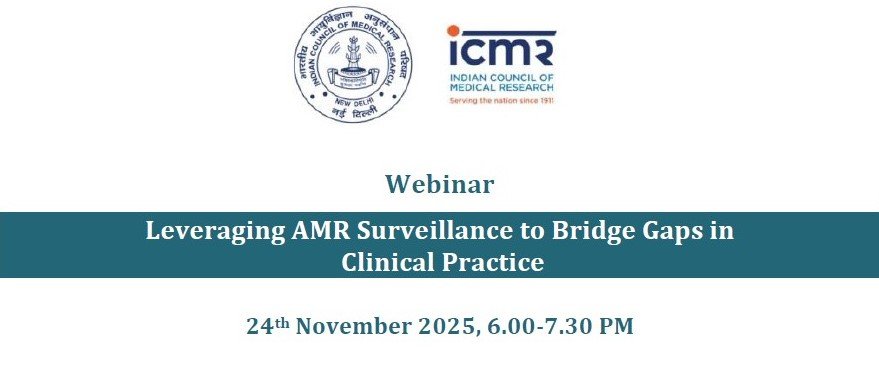Disclaimer: This post is for academic purposes only. Please read the original document if you intend to use them for clinical purposes.
This document summarizes the main themes from the expert guidance document by Society for Healthcare Epidemiology of America (SHEA), USA. It provides comprehensive recommendations for the proper reprocessing of reusable medical devices to prevent the transmission of infections in healthcare settings.
Main Themes:
- Spaulding Classification : The guidance strongly emphasizes the continued relevance and utility of the Spaulding classification scheme for categorizing reusable medical devices based on the risk of infection transmission associated with their use.
- Adherence to Manufacturers’ Instructions for Use (MIFUs): A central tenet of the guidance is the critical importance of healthcare facilities strictly following the MIFUs for all reusable medical devices and associated processing accessories (detergents, disinfectants, sterilizers, etc.). The FDA reviews medical devices and their labeling, which includes validated cleaning and processing instructions. The guidance also addresses conflicts that may arise between the MIFU of a device and an accessory, in those cases, facilities are responsible for contacting the manufacturers to resolve the conflict. Processes where neither the device nor the accessory manufacturer can validate the process are explicitly deemed unacceptable.
- Point-of-Use Treatment and Moisture Retention: Proper handling of reusable medical devices immediately after use, at the point-of-use, is highlighted as a crucial initial step in the reprocessing cycle. This involves initiating cleaning and/or keeping devices moist. It also advises against using products known to be fixatives (like alcohol) at this stage and recommends using moisture retention products when there are prolonged intervals before full processing or when devices might otherwise dry out.
- Water Quality: The quality of water used throughout the reprocessing cycle, particularly for cleaning and rinsing, is emphasized. Facilities must ensure water supplied to mechanical washers meets the requirements in the MIFU regarding temperature, pH, and chemical balance. Water must also be compatible with the disinfection process and not increase microbial load or leave excessive endotoxin. While routine point-of-use water quality testing is not recommended unless an outbreak is suspected, facilities should incorporate water usage into their water management plan and utilize treated water (e.g., deionized, reverse osmosis, sterile, filtered) as needed, with regular monitoring and maintenance of water systems.
- Limitations of Current Cleaning Verification Methods: The guidance addresses methods for assessing the cleanliness of reusable medical devices prior to sterilization or HLD. While external visual inspection is recommended, the document states that no recommendation can be made for additional methods for cleaning verification to prevent transmission events beyond visual inspection. Furthermore, it explicitly states that no recommendation can be made for the use of surrogate tests to detect residual organic material (eg, ATP, protein, heme) to assess adequacy of cleaning. Currently, these tests are not correlated with reduction of risk for microbial contamination or transmission.
- Monitoring of Sterilization and HLD Effectiveness: The document provides specific recommendations for monitoring the effectiveness of sterilization and high-level disinfection (HLD) processes:
- Sterilization: At a minimum, physical and chemical indicators should be included in all sterilization cycles, with regular addition of biological indicators (at least weekly, or daily for low-temperature technologies). Biological indicators and Type 5 chemical indicators are always required for loads containing implants, and these items should not be used until biological indicator results are negative.
- HLD: Routine microbial cultures are not recommended for assessing HLD effectiveness due to resource intensity and lack of evidence supporting reduced transmission risk. However, facilities can reliably measure effectiveness by culturing for residual bacterial contamination, and resources exist to aid in such processes when necessary (e.g., during outbreak investigations).
- Drying and Storage after HLD: Proper drying and storage following HLD are crucial to prevent microbial growth and biofilm formation. The guidance recommends inspecting devices for damage, drying them according to the MIFU (using pressure-regulated instrument air or HEPA-filtered air for lumens), and storing them in a manner that reduces contamination risk, adhering to the MIFU’s specifications for placement (vertical or horizontal).
- Single Use Sheaths and Covers: The guidance clarifies that using a single use sheath or probe cover on a semi-critical device does not automatically eliminate the need for HLD, unless explicitly permitted by a legally marketed device-sheath combination and supported by both MIFUs and EPA registration of the disinfectant.
- Lubricants and Defoaming agents: The document discusses the use of lubricants and defoaming agents, noting that non-water-soluble agents are difficult to remove from flexible endoscopes and may not be permitted by the MIFU. Water-soluble alternatives are preferred when allowed.
- Effectiveness of HLD : HLD, when performed correctly, is shown to be effective against HPV (Human papilloma virus), multidrug-resistant bacteria, and multidrug-resistant fungi like C. auris. However, mycobacteria are noted as being “relatively resistant to some high-level disinfectants.”
- Transitioning to Sterilization for High-Risk Semi-Critical Devices: The guidance recommends that facilities consider transitioning from HLD to sterilization for semi-critical reusable medical devices associated with a high risk of infection transmission (e.g., duodenoscopes), provided that effective and validated sterilization technologies are available and included in the MIFU.
- Preference for Single Use Components and Devices: To lower the risk of transmission, facilities are encouraged to choose duodenoscope designs that incorporate sterile, single use components and accessories. When available and feasible, facilities should also consider using sterile, single use endoscopes, particularly given the challenges in reprocessing complex devices like duodenoscopes.
- Specific guidance for Investigational and 3D-Printed Devices: The document provides specific recommendations for reprocessing investigational reusable medical devices and 3D-printed critical or semi-critical devices. Investigational devices posing a “significant risk” require FDA and facility IRB (Institutional Review Board (IRB) approval, with IPC involvement in processing protocols. For 3D-printed devices, facilities must ensure they are legally marketed per FDA and follow validated MIFUs. If a 3D-printed device is investigational, the same requirements for investigational devices apply.
- Visual Inspection and Management of Damaged/Contaminated devices: Routine visual inspection of reusable medical devices at various stages (before processing, after processing, and before use) is recommended using lighted magnification for external inspection. Devices found to be damaged should be sent for repair or discarded, as damage can impair effective processing. If a device has retained debris, it should be reprocessed according to the MIFU. If debris in a lumened device cannot be removed, the device should not be reprocessed and should be returned to the manufacturer. Borescopic examination for routine internal inspection is currently not recommended due to lack of standardization, training constraints, and unresolved issues with borescope reprocessing.
- No recommendation on Centralized vs. Decentralized processing structure: The guidance does not recommend a specific processing structure (centralized or decentralized) but advises facilities to assess the impact of their chosen structure on minimizing reprocessing failures and risks to patients and healthcare personnel.
Conclusion:
This guidance emphasizes the critical role of the Spaulding classification, strict adherence to manufacturers’ instructions, proper point-of-use treatment, attention to water quality, and diligent monitoring of reprocessing effectiveness to prevent healthcare-associated infections related to reusable medical devices. It also highlights challenges with current cleaning verification methods and the benefits of transitioning to sterilization or single-use options for high-risk devices when feasible.
Citation: Shenoy ES, Weber DJ, McMullen K, et al. Multisociety guidance for sterilization and high-level disinfection. Infect Control Hosp Epidemiol 2025. doi: 10.1017/ ice.2025.41









